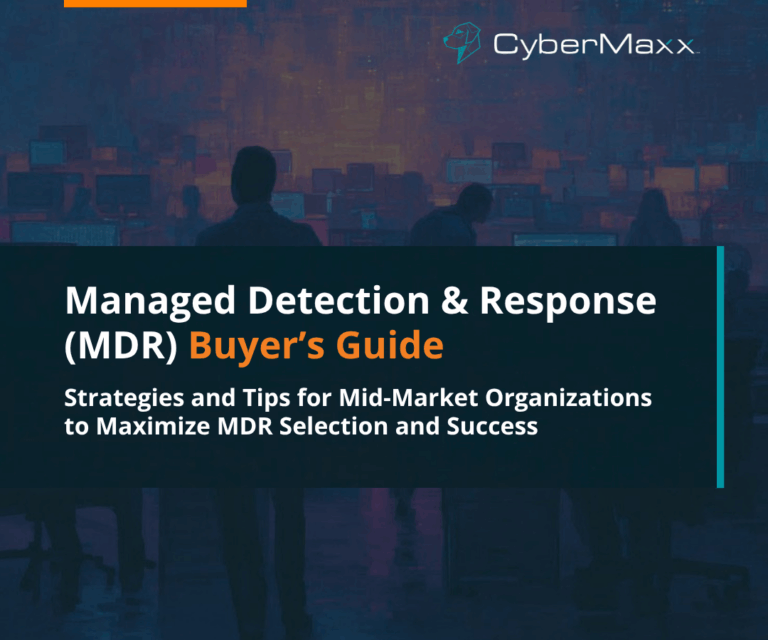As technology evolves, cybersecurity risks are becoming more complex. Organizations must invest in bolstering their cybersecurity strategies to outpace threats. This investment is essential to ensure that sensitive information remains protected.
Dave Gruber’s report, “How Offensive Security Strengthens Security Posture and Reduces Defensive Costs,” outlines how organizations can reduce cybersecurity risks. It emphasizes investing in proactive security strategies incorporating offensive and defensive security mechanisms and services.
This article outlines how organizations can use offensive strategies to enhance security measures and minimize defensive expenditures. Download the full report below.
The Growing Need for Robust Cybersecurity
Our widespread use of technology has many benefits: it boosts productivity, enhances collaboration, and promotes effective communication between workers worldwide. It can also help organizations safeguard sensitive information by ensuring it is only accessible to authorized users.
However, this increased use of technology comes with several challenges. A lack of budget or adequately trained staff can quickly prevent organizations from developing and implementing effective cybersecurity strategies. This leaves them vulnerable to potential attacks, often resulting in significant financial and reputational damages.

(Figure 1. MDR Use Cases for Enterprise and Midmarket Organizations)
The Shift Towards Proactive Security Strategies
Many organizations rely solely on traditional defensive cybersecurity strategies to remain secure. These strategies focus on creating and maintaining resilient systems that detect and respond to threats as they arise. It typically involves installing firewalls, encryption protocols, and incident response plans.
However, this methodology has its flaws. As threats increase, teams are becoming overwhelmed and exhausted from trying to detect and respond to incidents promptly. As a result, many vulnerabilities end up slipping through the net.
Adopting a proactive cybersecurity approach is crucial to minimize the likelihood of these incidents. This involves implementing offensive security measures that seek out weaknesses before cybercriminals can exploit them and cause harm.
Finding the time and resources required to develop an offensive security strategy can be challenging for small organizations. Help is available: Managed Detection and Response (MDR) providers like CyberMaxx help small organizations transition from defensive to offensive security.
The Benefits of Offensive Security
Offensive security provides more robust protection than a defensive strategy alone. Some of the key components of an offensive strategy include:
Penetration testing is a strategy where an expert attempts to identify vulnerabilities in an organization’s computer system. They achieve this by simulating cyber attacks to exploit these vulnerabilities. This helps to find weak points that attackers could take advantage of and allows organizations to fix them before they cause damage.
Purple teaming, a combination of red teaming (offensive security professionals) and blue teaming (defensive security professionals), helps identify and assess security risks. This collaborative approach brings together the benefits of both approaches to improve the organization’s overall security posture.
Threat hunting involves proactively searching for vulnerabilities within the organization’s system and providing information about which threats are targeting the system.
Together, these strategies help to reduce risks and lower the organization’s defensive operating costs.

(Figure 2. Additional Security Activities Organizations Ask MDRs to Perform)
Combining Offensive and Defensive Strategies
For optimal security outcomes, organizations can combine offensive and defensive strategies. This integrated approach promotes a continuous process of risk identification and remediation. As a result, it reduces the chances of falling victim to a cyber attack.
Many larger organizations have the resources to carry out this strategy. However, smaller organizations with limited time and fewer resources typically struggle to leverage both strategies effectively.
Managed Detection and Response (MDR) providers can help small organizations outsource offensive and defensive strategies. A team of qualified experts specially trained to integrate security tools and deliver effective insights handle these strategies.
CyberMaxx’s Managed Detection and Response (MDR) Experts Are Here to Help
Adopting an integrated security approach helps organizations stay ahead of bad actors. This approach involves incorporating offensive security strategies and continuously finding new ways to breach defenses.
Vendors like CyberMaxx offer a Managed Detection and Response (MDR) solution. This solution helps small organizations develop an offensive security strategy by outsourcing to a team of qualified professionals.
Download the full report below.





